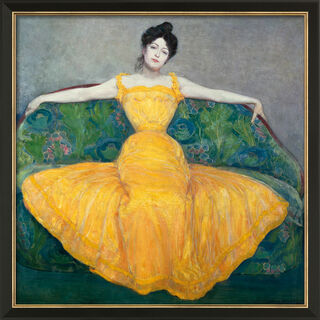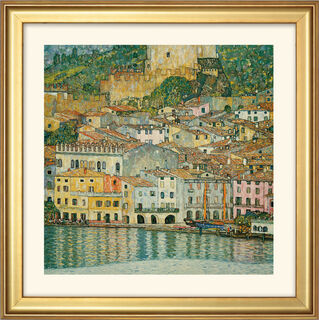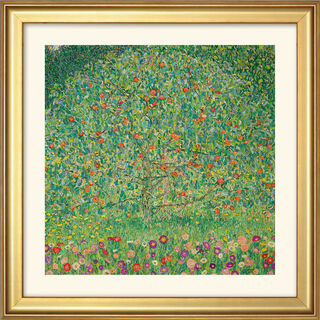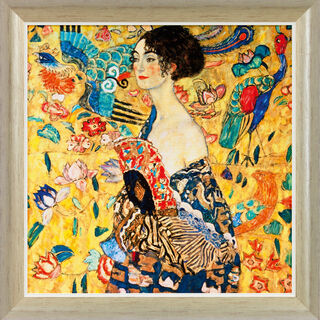Art Nouveau / Art Deco
Art Nouveau: A New Beginning for Art
At the turn of the 20th century, a new understanding of art began to establish itself in many countries worldwide. Although it was not a unified movement, for example, Jugendstil in Germany, Art Nouveau in France, the Modern Style in England, and the Secession style in Austria all had similar ideas. The representatives of Art Nouveau strove for a change in art on several levels: The new style was supposed to become more contemporary, less committed to tradition, and was to be applied not only to the visual arts but also to everyday objects of daily use. In addition, traditional crafts were to regain importance as a counter-reaction to industrialisation and mass production. Art Nouveau had its heyday from about 1890 to around 1910, and after the First World War, many of its ideas were continued in Art Deco. Famous Art Nouveau artists included Alphonse Mucha, Gustav Klimt, and Louis Comfort Tiffany.
Art for All Aspects of Life
Art Nouveau had its origins in the Arts and Crafts movement, which emerged in Great Britain in the second half of the 19th century. Its representatives saw arts and crafts, art, and architecture in crisis. Mechanised mass production had led to a loss of quality and aesthetics. The Arts and Crafts movement aimed to return to producing everyday products by hand from high-quality materials, preserving the beauty of the products alongside their utility. This was to be achieved by the fine arts and crafts working together.
Art Nouveau artists around the end of the 19th century adopted this concept worldwide. In their new concept, they considered painting, sculpture, architecture, design, and crafts as a unity. This enabled a modern style to take hold in many areas of life: Architects, for example, designed apartment buildings, museums, underground stations, schools, and swimming pools in Art Nouveau style. Its influence was also evident in furniture, tableware, or furnishings such as vases or lamps. Fashion and jewellery design as well as graphics and illustrations in book art and advertising also followed suit. To this day, the cityscape of many European cities is characterised by Art Nouveau.
Characteristics of Art Nouveau in Design and Art
Various forms of Art Nouveau in Europe shared the insight that artistic design should break away from the inherited precedents of previous centuries. Historicism, which had been popular in the 19th century, was particularly criticised. Instead of reviving past styles, Art Nouveau artists strove for modern forms of design that corresponded more to their attitude to life and the spirit of the times. In addition, the new design was to articulate a critical attitude towards industrialisation and technical progress. This led the Art Nouveau artists to develop a new imagery that was mainly inspired by nature. Pictorial elements that were recognisably borrowed from botany made them the typical features of Art Nouveau. They incorporated designs with curved and flowing lines, creating pictorial motifs with many both abstract and figurative ornaments. Art Nouveau paintings expressed a love of nature. The scenes of the Art Nouveau pictures often showed landscapes with flowers and trees or people in nature. Art Nouveau paintings are impressive because of their opulent compositions. Gustav Klimt's paintings with gold and silver editions, for example, are world-famous. In our shop, you can buy works by various artists in the Art Nouveau style.
Art Deco Followed Art Nouveau
Art Nouveau had its heyday until around 1910, but the First World War was the turning point. From around the 1920s, Art Nouveau was followed by Art Deco. Many of the Art Nouveau ideas and designs were adopted. The design continued to feature floral ornaments but influences from other art styles that developed simultaneously at that time were added. Under the influence of Futurism, Cubism and Bauhaus, elegant, clear lines and geometric decorations prevailed. Overall, the aesthetics appeared somewhat cooler and more austere. As in Art Nouveau, the new design was not only reflected in Art Deco artworks and architecture but also influenced many areas of everyday life, such as furniture and furnishings. At ars mundi, you can buy pictures in the Art Déco style.






























